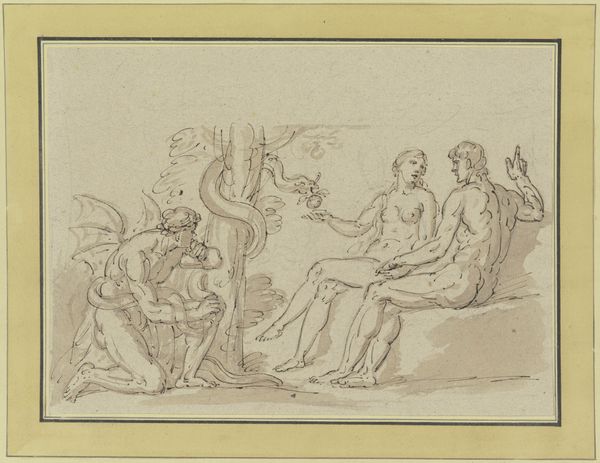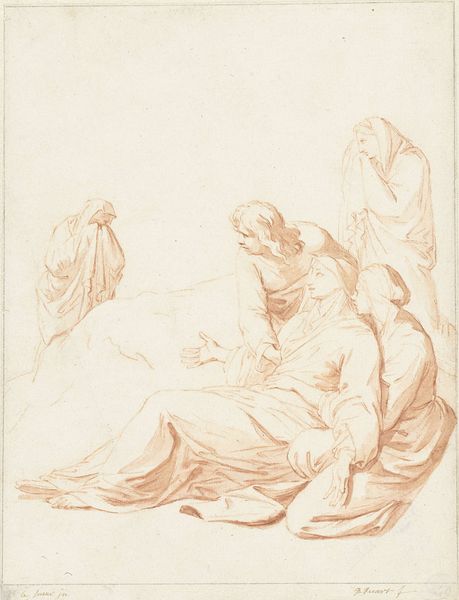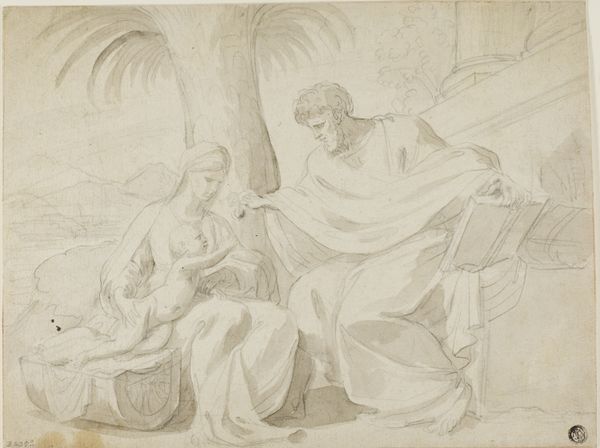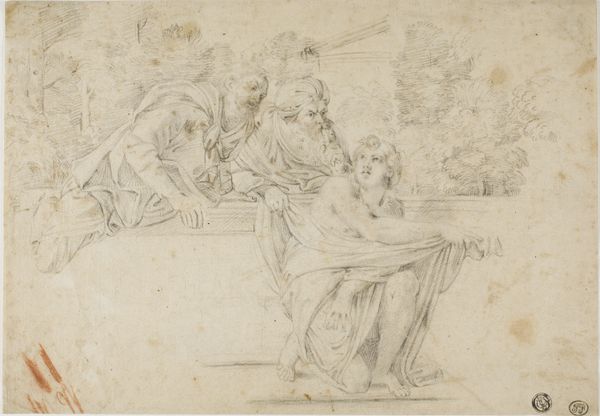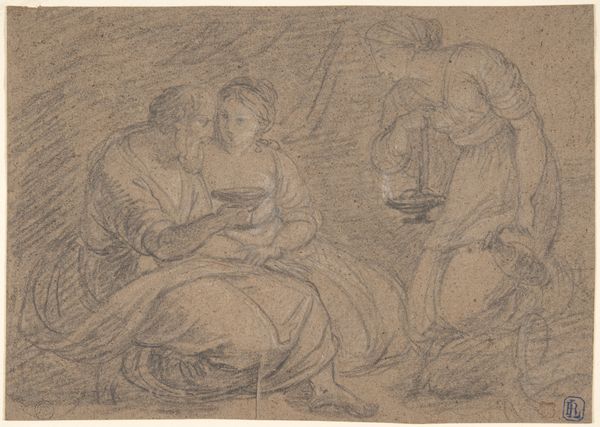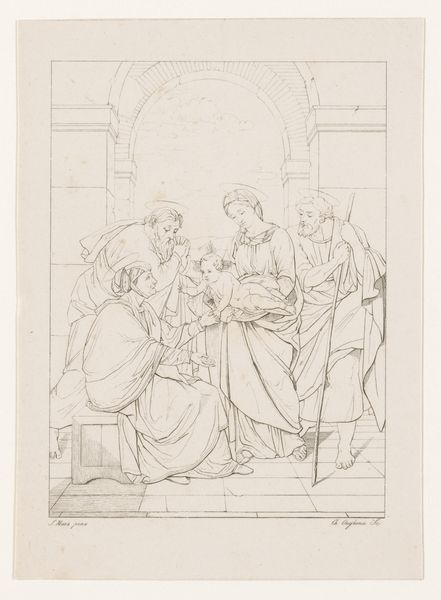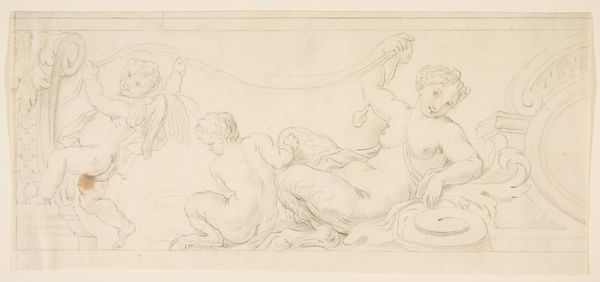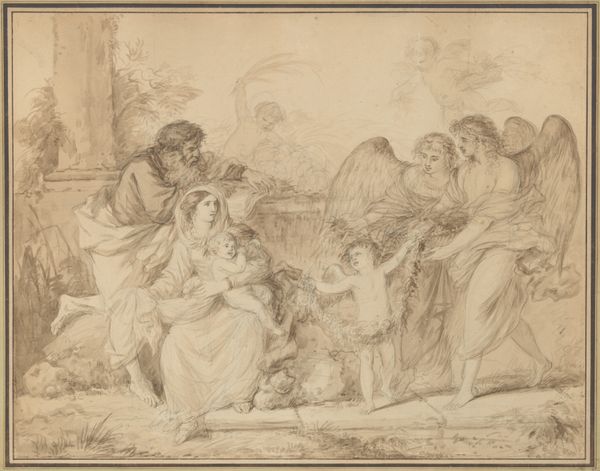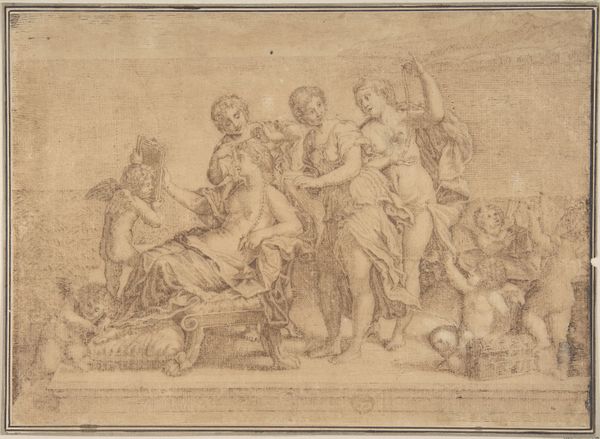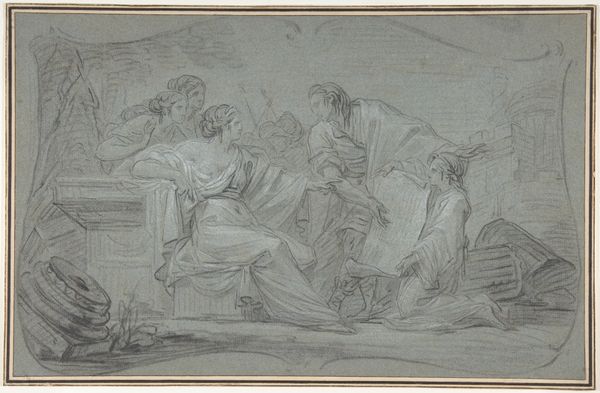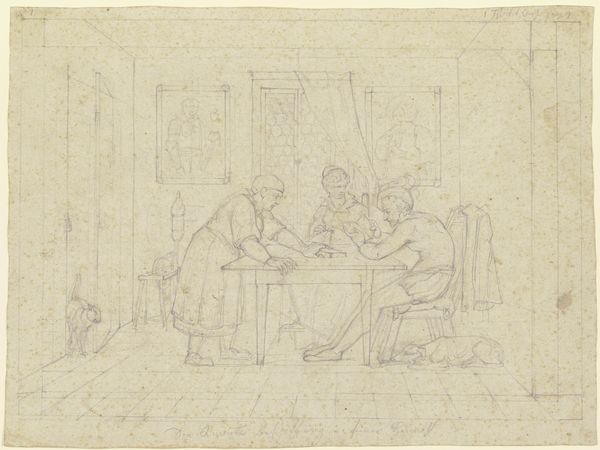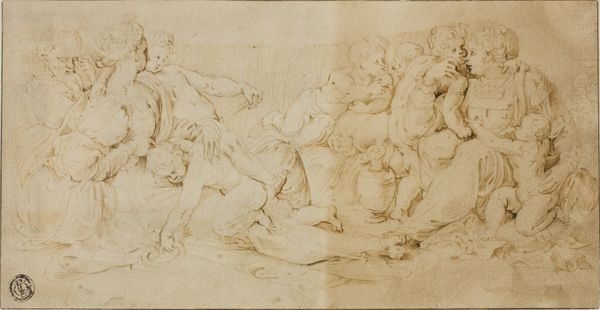
Ein Bauer reicht einem auf dem Schoß der Mutter sitzenden Kind einen Apfel
0:00
0:00
drawing, paper, pencil
#
drawing
#
landscape
#
classical-realism
#
figuration
#
paper
#
pencil
#
history-painting
#
academic-art
Copyright: Public Domain
Jakob Gustav Kaupert made this drawing, titled "Ein Bauer reicht einem auf dem Schoß der Mutter sitzenden Kind einen Apfel," which translates to "A farmer hands an apple to a child sitting on his mother's lap," sometime in the 19th century. This is a classically themed scene rendered with a neoclassical aesthetic. Looking at this drawing, it's clear that Kaupert was steeped in the artistic and social conventions of his time. The idealized figures, the serene domestic setting, and the emphasis on moral lessons all speak to the values of 19th-century bourgeois society. The references to the art of classical antiquity place the scene within a history of representation and reinforce the aesthetic standards of the day. But this seemingly straightforward image also opens up questions about the role of art in shaping social norms. How does this idealized depiction of family life reflect or challenge the realities of 19th-century Germany? What does it tell us about the relationship between art, morality, and social class? To answer these, we might look at historical documents, literature, and other visual sources from the period. By situating this drawing in its specific historical and institutional context, we can gain a deeper understanding of its meaning and significance.
Comments
No comments
Be the first to comment and join the conversation on the ultimate creative platform.
